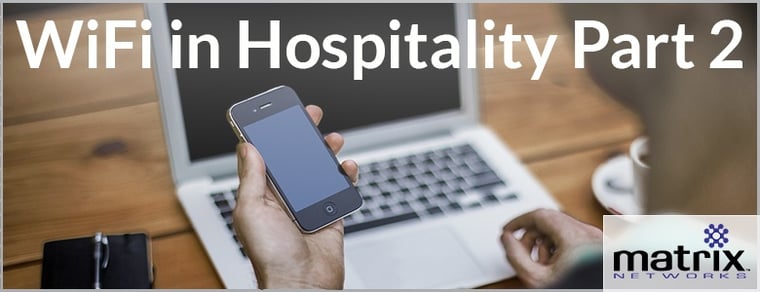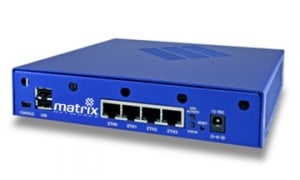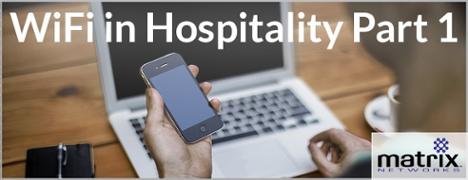
We established last time that guest wireless Internet is your most important amenity. You may not think so, but your guests certainly do! Consider that 94% of people cite WiFi as the most important amenity according to Hotel Chatter and a survey of travelers found that WiFi is the most important factor in selecting and rating your hotel. Somehow it even beats out location and a good night’s sleep.
Maybe you still don’t believe me. Have you ever tried searching “bad wifi” on TripAdvisor? I was blown away to be presented with 150,281 pages of reviews. Want to make sure your guests are upset about their stay and eager to share the experience with other potential guests – make sure your wireless is terrible. There are few things that will make guests madder than a webpage that will never load or multiple lost connections, or the nearly unheard of – no WiFi at all.
If 150,281 pages of bad WiFi rants can’t change your mind about just how important good WiFi is, then nothing will. But hopefully you’re on board so we can move on to what a good wireless network looks like.
Here is a refresher of the key elements to a hotel wireless network:
- Incoming Circuit: The incoming bandwidth from a carrier (Comcast, Time Warner, Frontier, Charter, Mediacom, etc).
- Hospitality Gateway: The brains of your network, providing a login page, security and integration to your PMS, among other things (think Nomadix, EthoStream, ANTlabs, RG Nets, ValuePoint).
- Network Switch: This distributes the bandwidth to the other parts of the network (HP, Netgear, Cisco, DLink).
- Wireless Access Point (AP): This broadcasts the wireless signal and provides connectivity to your guests. There may also be a wireless controller to manage the APs (Ruckus Wireless, Cisco, Aruba).
- Cable: This is the physical wire that connects all the key elements together (Cat5e, Cat6).
- Guest Support Company: This is the 800 number that your guests call for remote assistance if anything were to happen. They also provide monitoring, troubleshooting and some sort of portal for you to see statistics of your network and make changes to it.
Last time we talked about circuits and how much bandwidth was enough. This time, we’re going to take a look at the hospitality gateway. There is a wide breadth of options here from the open source pfSense to the old faithful Nomadix to RG Nets, ValuePoint, EthoStream, etc, etc.
In my experience, it seems like most hotel owner/operators know that they need one of these but have just about zero idea what it actually does. So, what is this gateway thing, why do I need it, and how does it help me?
First off, the hospitality gateway is the brains of your wireless network (Matrix Networks has developed its own brand of Hospitality Gateways. Learn more here). It provides secure access for your users, makes sure they can’t access each other’s devices, provides a splash page with terms of use to limit your liability. It also makes sure one guest can’t use all your bandwidth, gives your support company remote access to the network and visibility into guest connections, and sometimes much more.
terms of use to limit your liability. It also makes sure one guest can’t use all your bandwidth, gives your support company remote access to the network and visibility into guest connections, and sometimes much more.
The most basic gateway should do everything above. Once you enter the middle range of gateways, which is where I would place Nomadix, you start adding things like basic load balancing of multiple Internet circuits, basic PMS integration, and some limited content filtering.
At the high end of this spectrum are gateways like RG Nets. Here you will find advanced load balancing and failover algorithms, full web hosting for any range of custom splash pages, more advanced firewall features (which we won’t dive into here), advanced PMS integration, intelligent content filtering and even the ability to advertise things like your restaurant. This is the right option for you if you want to be able to customize every aspect of your guest’s wireless experience – but it comes at a premium.
With any luck you now have at least a decent idea of what the gateway does for you. So, do you really need one? Short answer: Yes.
Without a gateway, you are opening yourself up to all sorts of liability. Lately there has been an influx of lawsuits around illegally downloaded movies. If you don’t have a gateway on site with terms and conditions and possibly some filtering to block this sort of activity, you can be held liable for the illegal downloads on your network.
The gateway also provides a centralized data base of your users and how your network is set up. In order to have a consistent wireless experience throughout the property and a network that can be supported, some sort of gateway is necessary. We won’t even get into brand standards, but suffice to say they all stipulate that you need a gateway.
I think the most important question here is, “How can I make my gateway work for me?” This is really the larger question “How do I make my guest WiFi work for me?”
The answer to this question is varied.
Here are some common things I hear ranging from the basic to the more advanced:
- I want to avoid negative reviews.
- I just want the guest experience to be positive.
- I want to block illegal downloading and file sharing.
- I want to generate revenue by offering higher speeds at a premium with PMS billing.
- I want to provide VIP speeds to rewards members through PMS codes with no end user intervention.
- I want to provide custom splash pages and speed options for conference center groups that come to the property.
- I want to advertise my on-site restaurant, bar or spa service to guests through the wireless network.
The options are really only limited by your imagination. In order to determine the right gateway for your property, these are the questions that need to be considered.
When paired with the right circuit and other wireless equipment, any gateway should be able to meet numbers 1 and 2. As you move down the list, more will be eliminated until you find the right gateway for what you want to do.
Spend some time and think about this in context of your property and guests and then contact your wireless provider to see what gateway will provide the functionality that you want out of your network.
A word of advice: If you want to generate revenue from your wireless network, that’s fine. However, the way you do it is important. Guests are always going to be upset if they have to pay for a basic wireless connection. I am always a proponent of providing a basic speed for free.
The way to do this and not upset your guests is to provide the free speed with a list of online activities that speed will support well. Then, provide options for faster speeds for reasonable costs with online activities that each tier will support.
Doing it this way sets expectations for the guests so that they don’t get upset they can’t stream Netflix in HD on your free basic WiFi. It also doesn’t anger the people that just need to check an email or look for directions.
Also, be sure that your pay-for options really are providing the advertised speed. Nothing makes someone more upset than paying for Ferrari speeds and getting something that feels like a Geo Metro.
One last thing about gateways before I bore you to death: Gateway size is measured in licensed client devices. This means that if a guest walks into your hotel with an iPad, iPhone and MacBook, three device licenses just got used.
Different gateways handle licenses in different ways. In Nomadix for example, a client device uses a
license for however long it takes until they have to sign in again – usually set between 8 and 24 hrs. RG Nets on the other hand is more of a simultaneous active device license. Once someone stops using a device for 20 minutes, it no longer takes up a license.
If you own a 100-room Holiday Inn Express with no conference space, I would recommend a gateway
with a minimum of 250 licenses if it uses the Nomadix model.
This will also vary by occupancy rate, what kind of travelers frequent your hotel (business vs. couples vs. families) and really gets interesting when you add in large conference spaces.
Make sure you talk about all of these items with your wireless support provider when selecting a gateway, and you should come away with not only something that meets your guests’ needs, but also fits your vision for your property as a whole.
Learn more about Hospitality Wireless.
Author: Jeremy West




.svg%20(1).png?width=55&name=1200px-Logo_of_YouTube_(2015-2017).svg%20(1).png)

